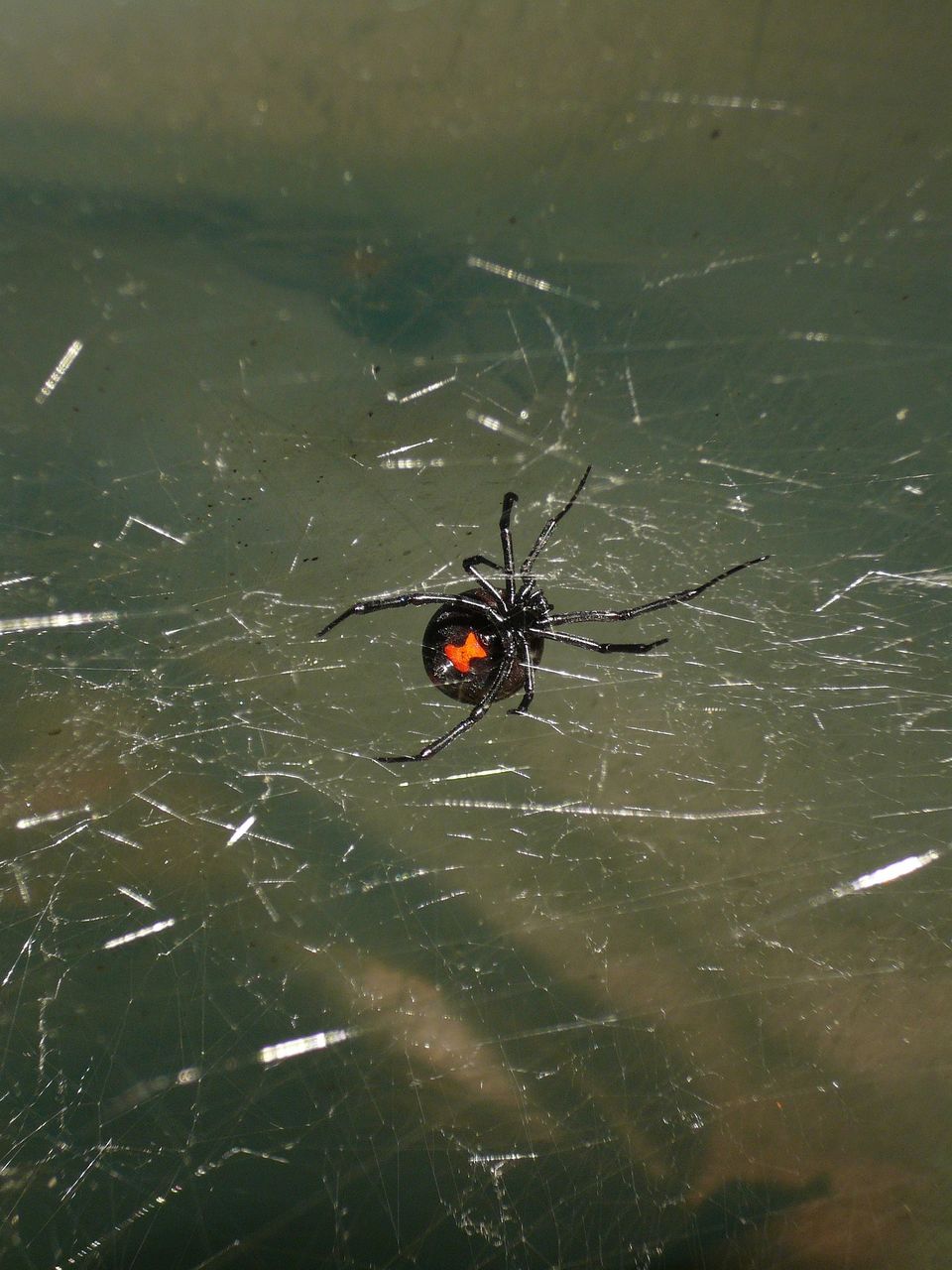
Black Widow
The black widow spider, scientifically known as Latrodectus hesperus, is the most common harmful spider found in California. Its bite can result in a range of reactions, from mild to painful and serious. However, it is highly unlikely to cause death, and many symptoms can be alleviated with proper medical treatment. If someone is bitten by a black widow spider, it is important to stay calm and seek immediate medical advice. It is also helpful to try and capture the spider for identification purposes.
Adult female black widow spiders have a shiny black body, slender black legs, and a red or orange hourglass-shaped mark on the underside of their large, round abdomen. The body length, excluding the legs, ranges from 5/16 to 5/8 inch. Only the larger immature females and adult females have the ability to bite through human skin and deliver enough venom to cause a painful reaction.
On the other hand, adult male black widow spiders are approximately half to two-thirds the size of females. They have a smaller abdomen and often go unnoticed. While male black widows do possess venom, their fangs are too small to break through human skin.
Black widow spiders can be found in various regions of California. They typically inhabit dark, dry, and sheltered locations that are relatively undisturbed. These places include piles of wood, debris, or rocks; culverts; hollow stumps; old animal burrows; garages; sheds; barns; crawl spaces; utility meter boxes; outhouses; and sometimes among plants. The risk of being bitten by a black widow spider is highest when individuals inadvertently disturb the spider while cleaning or handling objects in such areas. Taking precautionary measures such as wearing gloves and a long-sleeved shirt is sensible when working in undisturbed areas that offer favorable hiding spots for spiders.
Adult female black widow spiders have a shiny black body, slender black legs, and a red or orange hourglass-shaped mark on the underside of their large, round abdomen. The body length, excluding the legs, ranges from 5/16 to 5/8 inch. Only the larger immature females and adult females have the ability to bite through human skin and deliver enough venom to cause a painful reaction.
On the other hand, adult male black widow spiders are approximately half to two-thirds the size of females. They have a smaller abdomen and often go unnoticed. While male black widows do possess venom, their fangs are too small to break through human skin.
Black widow spiders can be found in various regions of California. They typically inhabit dark, dry, and sheltered locations that are relatively undisturbed. These places include piles of wood, debris, or rocks; culverts; hollow stumps; old animal burrows; garages; sheds; barns; crawl spaces; utility meter boxes; outhouses; and sometimes among plants. The risk of being bitten by a black widow spider is highest when individuals inadvertently disturb the spider while cleaning or handling objects in such areas. Taking precautionary measures such as wearing gloves and a long-sleeved shirt is sensible when working in undisturbed areas that offer favorable hiding spots for spiders.

